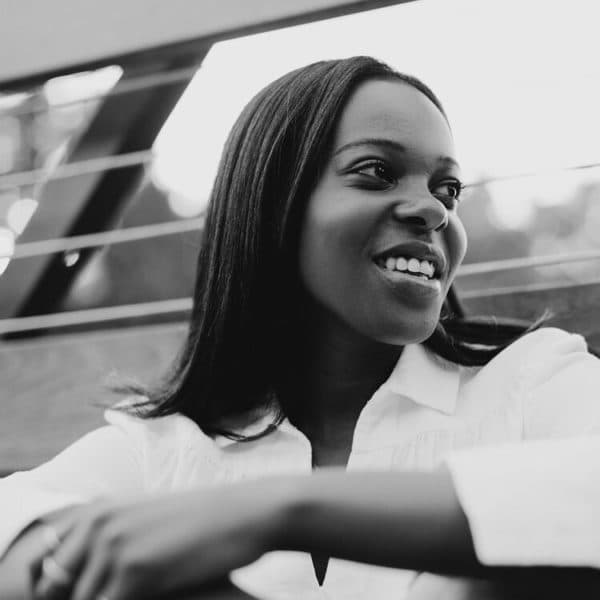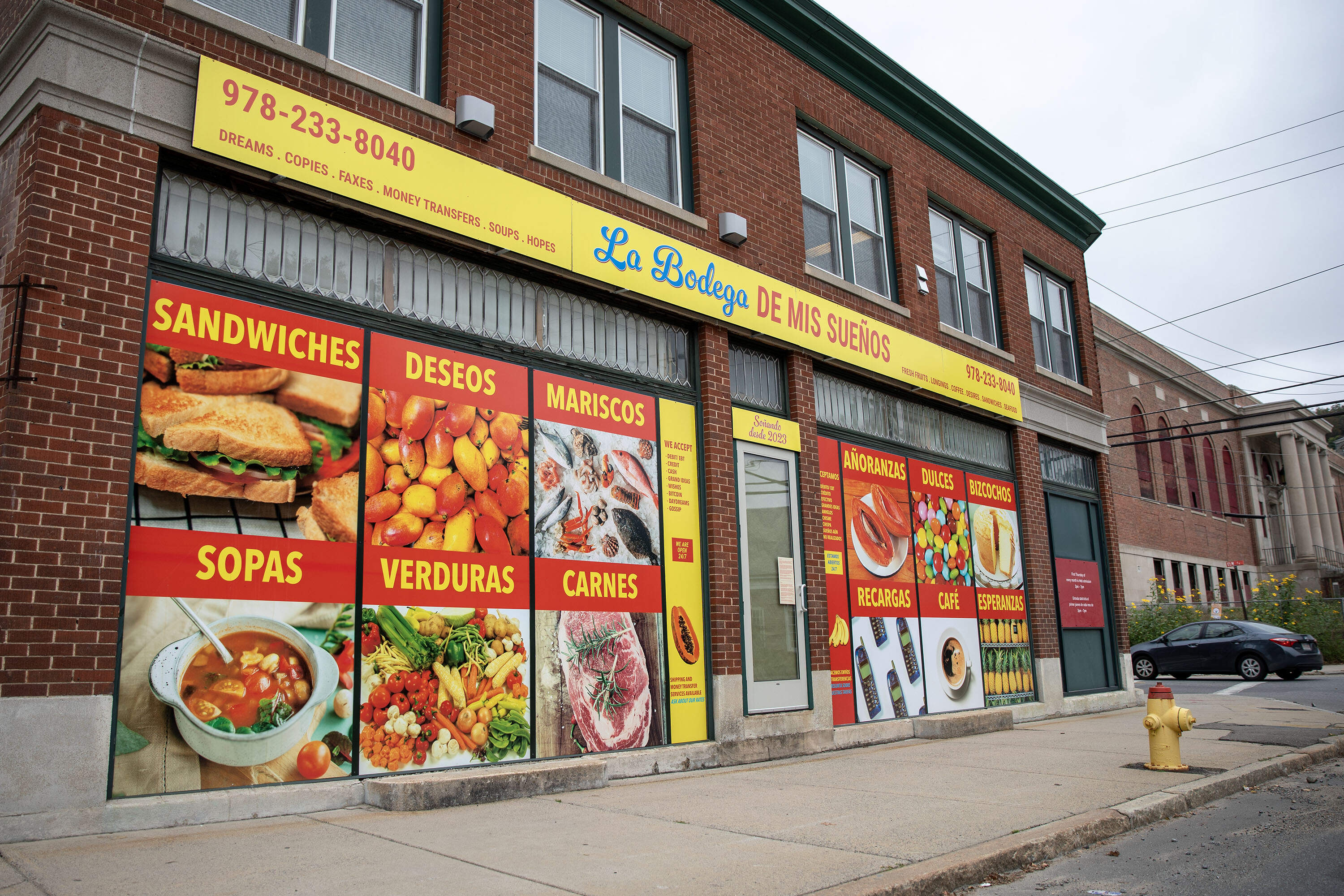
Gabriel Sosa explores language and justice in his multimedia creations
In Gabriel Sosa’s home studio, there’s a box filled to the brim with illustrations. Each was made during his childhood in Miami, Florida. The drawings are whimsical and colorful, showcasing mystical creatures of his own imagination and otherwise; the "Teenage Mutant Ninja Turtles" make recurring appearances. There are floorplans he created and little maps he drew. He was a creative kid wrapped in culture, and he put it all down on thick drawing paper. At 38, he looks back on his early explorations with fondness and carries that tradition forward in his work today.
“One of the things that's really notable about the Cuban American community is that I was raised somewhere that was just soaked in nostalgia,” Sosa said.
The artist's most recent work is inextricably tied to this idea.
When pulling into the Fitchburg Art Museum, it’s impossible to miss the rows of painted mangoes, fish, sandwiches and coffee lining the building's southern wall. Altogether, the images make up “La bodega de mis sueños,” Sosa’s installation and public art project that touches on many of his interests: community, dialogue, immigration and social justice.
In an increasingly Spanish-speaking neighborhood, it’s a love letter to the community and a statement about the American Dream. “Fitchburg has always been a place for immigrants, and the immigrant communities have changed over the decades and centuries even,” said Lauren Szumita, a curator at Fitchburg Art Museum. Szumita has noticed people in cars and on foot slow down, point and even enter the museum to ask about the bodega.
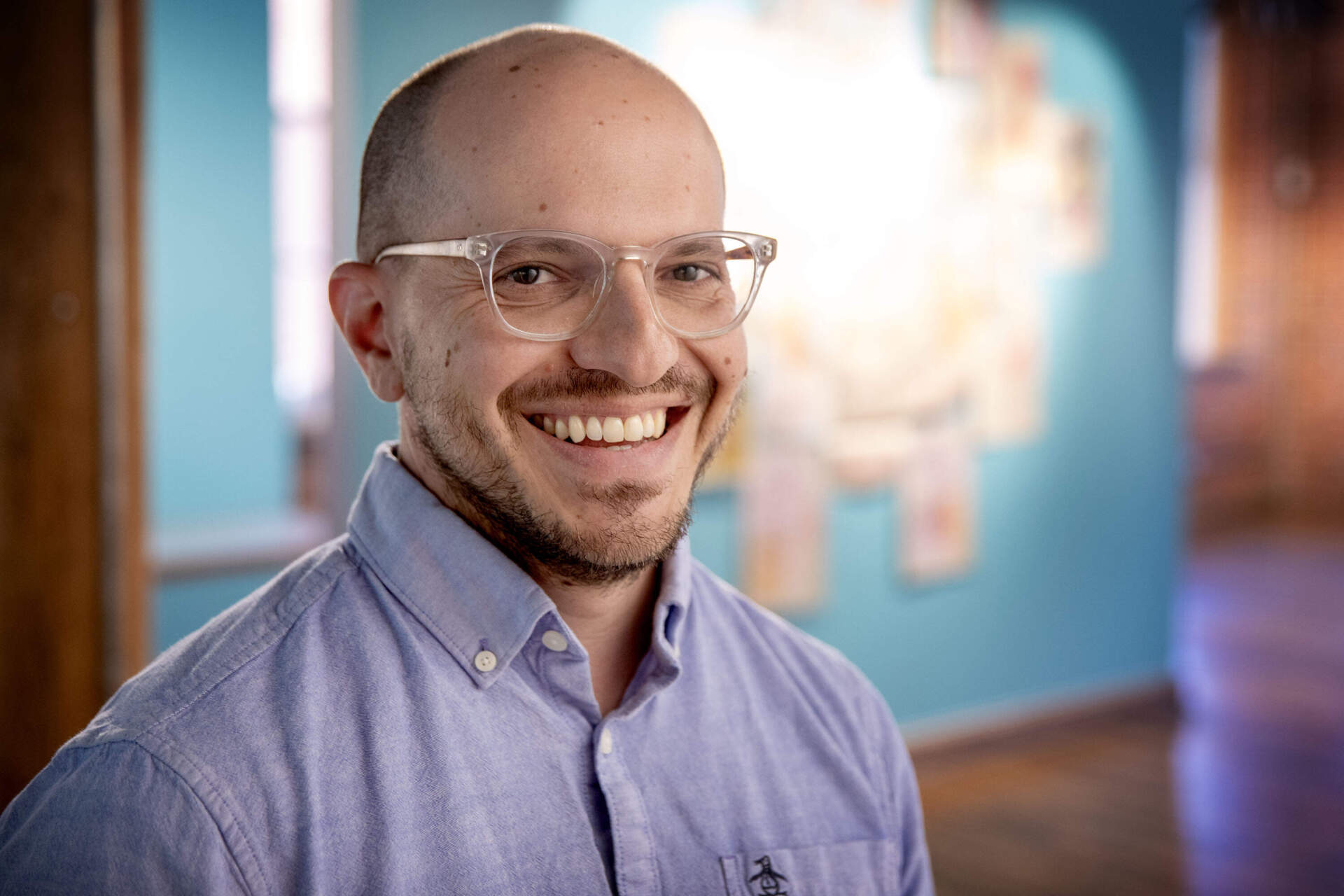
Immigration is a central theme in Sosa’s personal life and creative practice. His mom was a participant in Operation Pedro Pan, a program that resettled 14,000 unaccompanied Cuban minors in the United States. From Havana by way of Jatibonico, a town that Sosa likens to Macondo, the fictional village from “One Hundred Years of Solitude,” she was sent to Richmond, Virginia, and eventually settled in Miami, Florida.
“I was born and raised into a Cuban family in a Cuban community in Miami where it wasn't unusual to be Cuban American at all," Sosa said. "And I think living outside that context, the importance and uniqueness of being Cuban American has really had a profound effect on me.”
Although today he’s an artist, a lecturer at the Massachusetts College of Art and Design and the deputy director of Essex Art Center in Lawrence, his work began as a court interpreter. “The court is a very intimidating place for so many reasons. I think one of those reasons is certainly language,” Sosa said.
Advertisement
His multimedia projects often feature words and phrases in both Spanish and English, and Sosa often draws on experiences he’s had in court. “Gabriel had so much experience working within the justice system. I think that viewpoint is one that people can't see very often,” Szumita said.
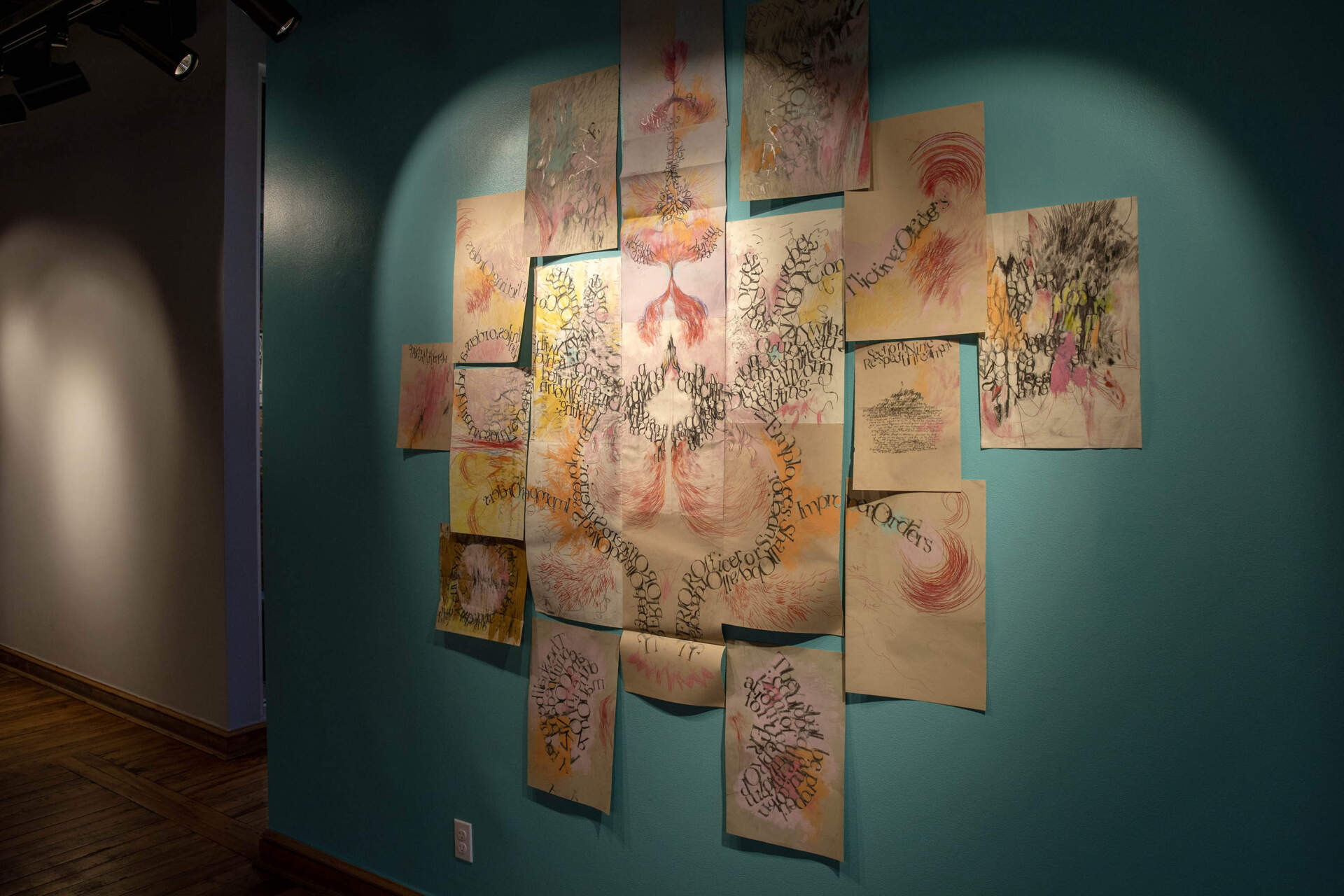
In the court, Sosa witnessed how power can be exerted through words. Sometimes, he translated directly for people in court and other times he had to transcribe and translate phone calls that were made to and from jails. Prosecutors hoped he’d find incriminating evidence, but what he usually heard were heartfelt phone calls between loved ones.
“It was mainly just people talking about their day or how much they missed someone,” Sosa said. Assignments like these, or moments translating in court when the paradoxes of his role were on full display, have become central to his work as an artist.
Those calls became the inspiration for a project that repurposed words from those transcripts. The piece is called “Le Queda Un Minuto,” or “You Have One Minute Left,” and displays crumbled pieces of paper with words and phrases commonly heard on the calls Sosa transcribed.
The point of translation is to help ensure that all defendants are on equal footing — that a difference in language will not hinder one’s case. “But it's not just about language. It's about knowledge. It's about education level. It's about socio-economic background and all of these other things,” Sosa said.
"I was born and raised into a Cuban family in a Cuban community in Miami where it wasn't unusual to be Cuban American at all. And I think living outside that context, the importance and uniqueness of being Cuban American has really had a profound effect on me."
Gabriel Sosa
Sosa’s long-time friend and collaborator, David Guerra, a curator and the founder of Boston gallery ÁREA, also started his career in the legal world. “I think collecting all that experience, collecting all that pain, collecting all those uncertainties inspired him to create a body of work that would reflect the necessity of paying attention to those differences,” Guerra said.
The idea of using art as a jumping-off point for connection, discussion and community began to solidify for Sosa after creating an installation called “Do You Understand What I'm Saying?” Using salient questions Sosa heard in court, he decorated a window near the CVS and Boston Sports Club in Somerville’s Davis Square. In bright red lettering, the window posed questions like, “Did anyone force you?” and “Is your mind clear today?” And he brought a group of people to read them aloud. The exercise shifted something for him. “In terms of work that's two-dimensional, sometimes just putting it up on the wall is okay," Sosa said. "But, sometimes, there are so many other ways to engage that work.”
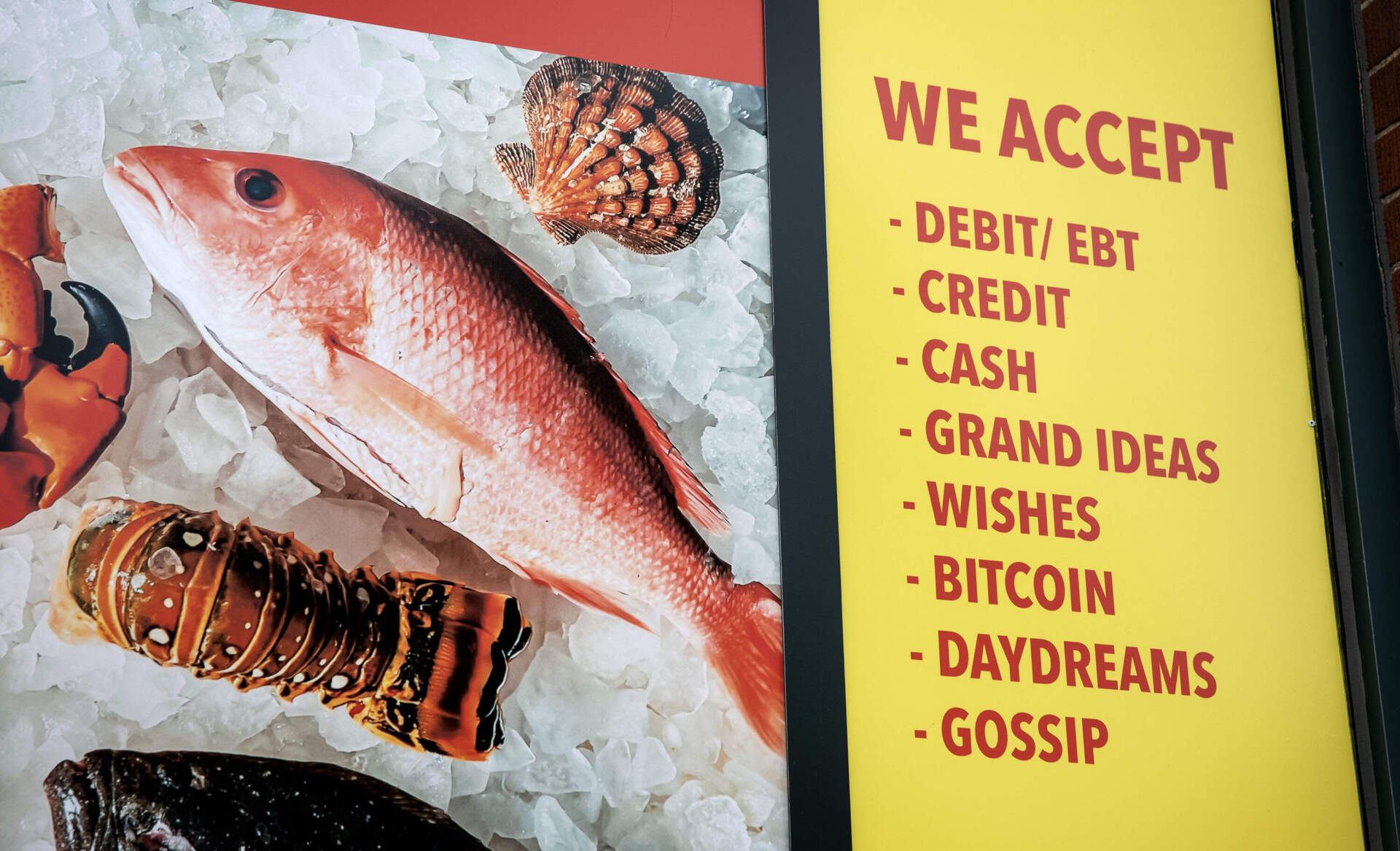
He explored this in “La bodega de mis sueños.” On the display, there’s a phone number, and when you call it, you are invited to leave a message about your dreams. “Maybe those are dreams that you have when you go to sleep at night, or maybe those are dreams in the bigger sense,” Sosa said.
People have been calling in and leaving messages of wide-ranging dreams: taking their aunts on vacation, owning a Bitcoin fortune, becoming musicians and remaining happy and healthy.
The throughline in all of his work is the unfettered belief that everyone — no matter who they are or where they are from — is a person with dreams and memories and is deserving of dignity.
The voicemails left for Sosa are forward-looking, but his project, like much of his work, also honors the past. There used to be a convenience store on 67th Avenue in Miami called La Campana. Sosa remembers it well. He used to take what felt like hours-long walks there to meet with his grandfather’s friends, Cuban men dressed in guayaberas and pleated pants. They would talk about politics, neighborhood gossip and, most importantly, their dreams.
One of Sosa’s dreams is to grow a mamey tree, his favorite fruit, which tastes like a cross between sweet potato and pumpkin with notes of cantaloupe. “I’m dreaming about how joyous it would be to share mamey with everyone,” Sosa said.
But his dearest dream, well represented in his work, is to be in communion with more people, faces new and old.
This segment aired on October 18, 2023.
